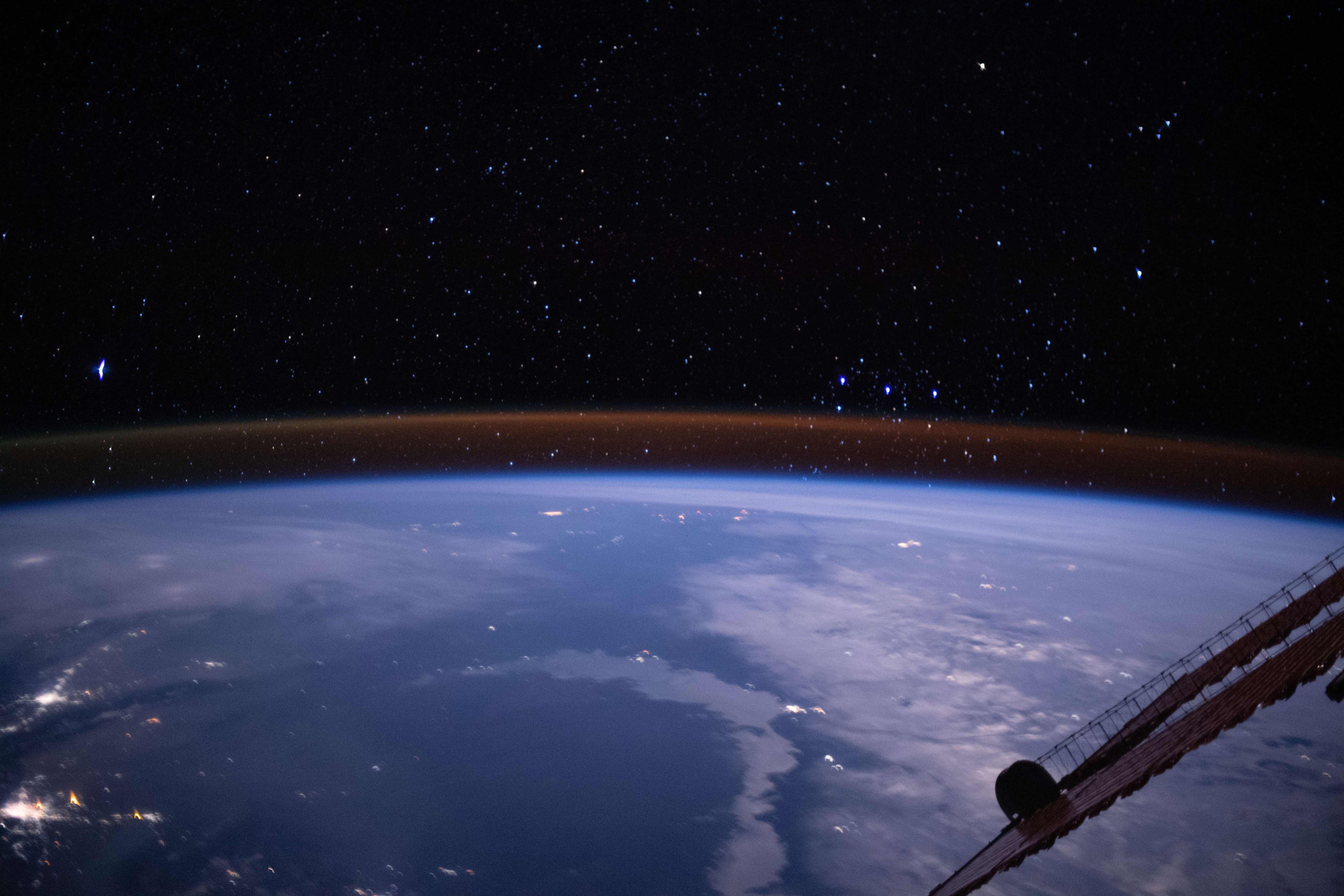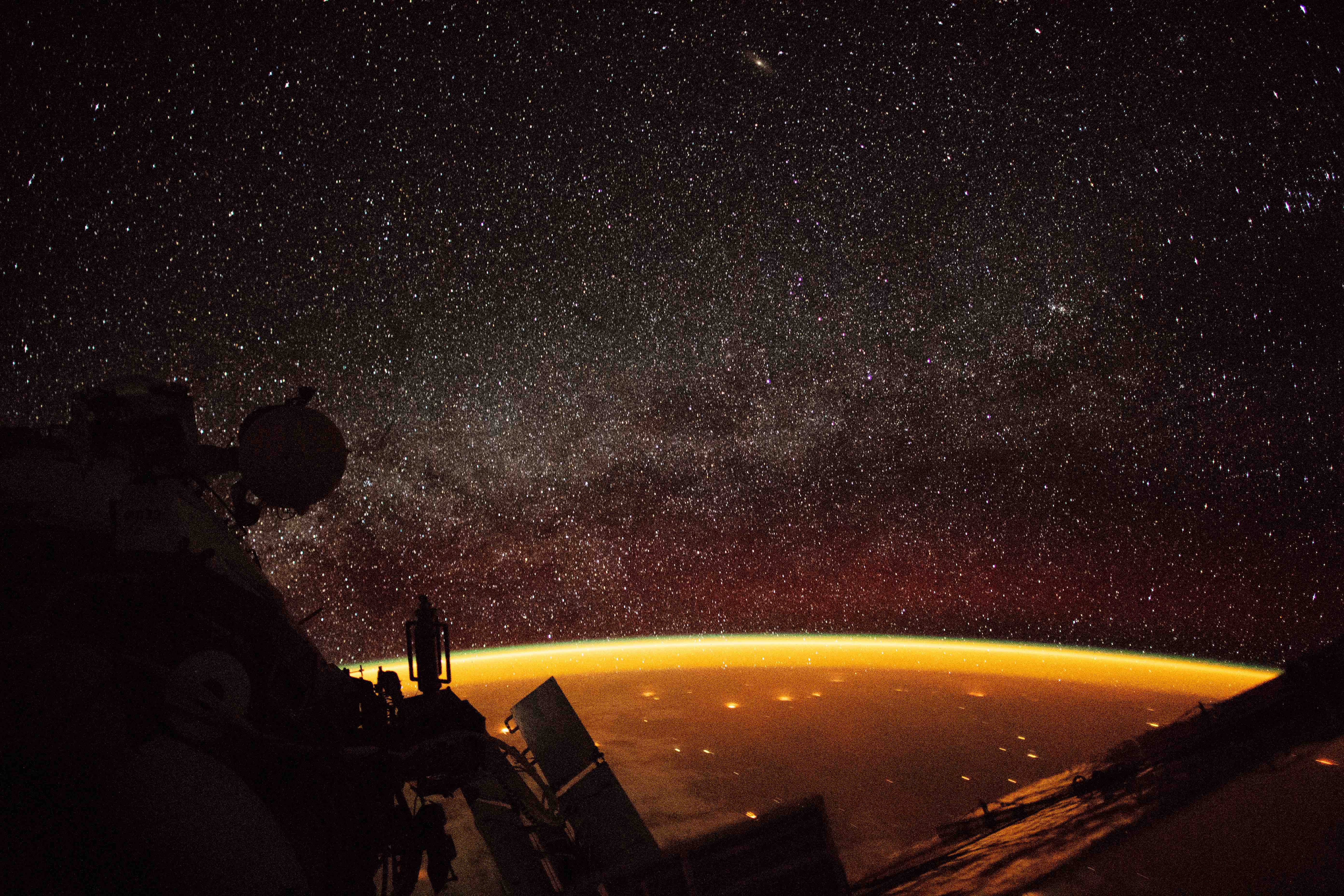Why the night sky is never completely dark
The dark side of the Earth is never completely dark because Earth's upper atmosphere glows at night.
Earlier this month, a photo taken from the International Space Station showed a faint ring of glowing amber light hovering high above Earth's surface.

Image: A photo of airglow taken from the International Space Station as it was passing over Kazakhstan on March 4th, 2020. Source: NASA/ISS
This luminous halo surrounding the planet was a phenomenon called airglow or atmospheric glow, which typically occurs when ultraviolet radiation from the sun energises molecules in the highest layer of Earth's atmosphere. Some of the molecules that are energised in the upper atmosphere during the day store this energy up and release it at night. The result of this reaction, which is called chemiluminescence, is a colourful layer of light that can be seen from the ground and from space.
While airglow occurs across the entire sky, it's easier to see near the horizon and through the light-enhancing effect of long-exposure photography. Under the right conditions and in the absence of light pollution, airglow can be seen with the naked eye.

Image: A photo of airglow taken from the International Space Station as it was passing over Australia on October 7th, 2018. Source: NASA/ISS
From the ground, airglow is sometimes mistaken for an aurora australis or aurora borealis, especially when it appears green. From space, the phenomenon is not uncommon in night-time photography captured from the International Space Station.